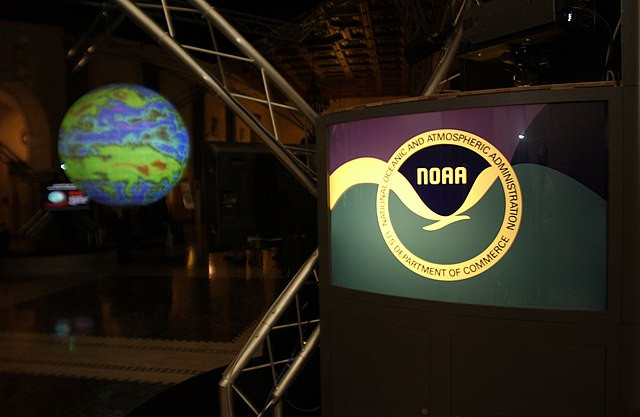The National Oceanic and Atmospheric Administration (NOAA) has laid off approximately 880 employees as part of a broader effort to shrink the federal workforce, a move that has drawn sharp criticism from scientists, lawmakers, and climate experts. The cuts, which represent about 7.3% of NOAA's 12,000 employees, have already begun to impact key weather and climate forecasting operations.
The layoffs, which primarily targeted probationary employees with less than two years of service, come as President Donald Trump's administration seeks to curb government spending. Former NOAA officials have warned that an even larger round of job reductions may follow, potentially affecting over 1,000 additional employees. Andrew Rosenberg, a former NOAA deputy director, said executives at the agency were informed that further reductions are expected.
Among the most affected divisions is the National Weather Service (NWS), which provides forecasts, severe weather warnings, and hurricane tracking crucial for public safety. "We will be less prepared for the next disaster and the disaster after that," said meteorologist Tom Di Liberto, who was among those laid off. "We're asking an already short-staffed agency to deal with increasing extremes with less people. Burnout will be real."
The National Weather Service confirmed that budget constraints have already forced some offices to scale back their operations. In Kotzebue, Alaska, staffing shortages have led to the suspension of twice-daily weather balloon launches, which provide critical data on upper-atmosphere conditions used to refine weather models nationwide. Additionally, the Great Lakes Environmental Research Laboratory announced its public communications would go on "indefinite hiatus" due to personnel cuts.
The Office of Space Commerce, responsible for licensing commercial satellites and preventing orbital collisions, also saw significant reductions, raising national security concerns. NOAA's Environmental Modeling Center, which oversees the agency's supercomputer-powered weather models, was another target of the layoffs.
Senator Maria Cantwell (D-Wash.), ranking member of the Senate Commerce Committee, condemned the layoffs, warning of their economic consequences. "This action is a direct hit to our economy because NOAA's specialized workforce provides products and services that support more than a third of the nation's GDP," Cantwell said in a statement.
The cuts have sparked widespread backlash from the scientific community, with many experts warning that reduced staffing could jeopardize the accuracy and timeliness of weather forecasts. "The mass firing of both new hires and recently promoted senior staff within NOAA, including mission-critical and life-saving roles at the National Weather Service, is profoundly alarming," said Daniel Swain, a climate scientist at UCLA.
Jeff Watters, vice president of external affairs for the Ocean Conservancy, warned that the reductions would have a cascading impact beyond just weather forecasting. "NOAA is the eyes and ears for our water and air," Watters said. "Indiscriminate firing of employees is going to sabotage NOAA's ability to do essential work that every single American relies on."
The layoffs come as NOAA faces increasing demands amid rising extreme weather events linked to climate change. Hurricanes, wildfires, and record-breaking heat waves have placed growing pressure on the agency's forecasting capabilities. Many meteorologists have voiced concerns that with fewer personnel, response times to disasters could be slowed, endangering lives.
The National Weather Service, which had already been operating with a staffing shortfall before the cuts, is now expected to be even more strained as the spring severe weather season approaches. "NOAA remains dedicated to its mission, providing timely information, research, and resources that serve the American public," a NOAA spokesperson said in response to the backlash.






